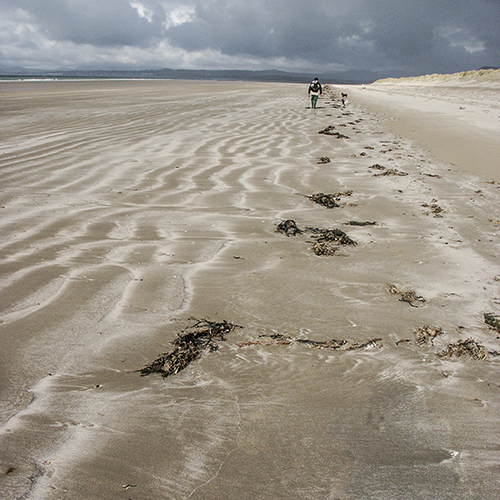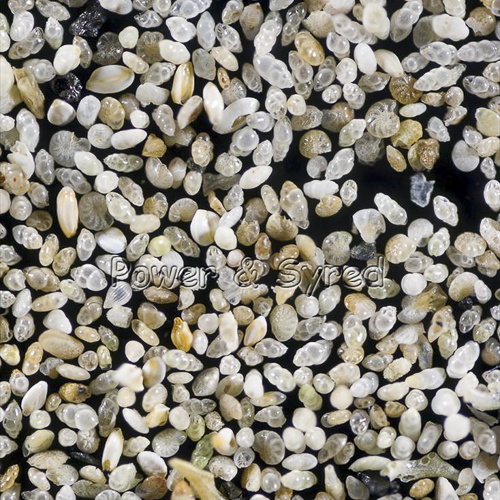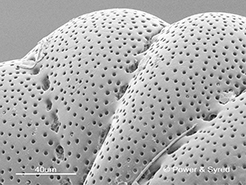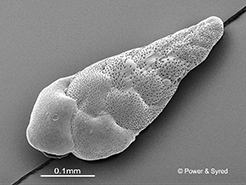
She sells sea shells…
The loneliness of the long-distance beachcomber. A bleak, deserted,
windswept beach along the west Wales coastline.
Whilst we are all aware of sea shells on the sea shore and probably without exception have taken home the odd one or two as mementoes of a particular holiday, how many of us appreciate that more often than not we are tramping over myriads of shells we didn’t even know were there. Above is a photograph of a delightful sandy beach along the Ceredigion coastline; at low tide miles of flat sand with occasional patches of ripple marks. At some time or another throughout the year most flat, shallow-gradient beaches exhibit white streaks running parallel to the sea. Sometimes these streaks can be very extensive, as seen in the photograph above, which is a perfect example of the natural grading of sand by wave action where light material is ‘panned’ or sedimented above heavier particles of the sand itself. When examined with a hand lens, the content of these streaks will be seen to comprise largely of a miscellany of broken shell fragments and sea urchin spines. When examined more closely though with a microscope, a multitude of sub-millimetre shells comes into view.
Mixed foraminifera tests (shells) collected from the beach above.
Width of image represents 4.4mm
These shells are the remains of microscopic organisms known as foraminifera which belong to the phylum of Protozoa that includes paramecia and amoebae. These organisms are an important component of marine plankton and upon their death the shells (more correctly known as tests) sink to the sea floor forming vast deposits. The word foraminifera means hole-bearing as the tests of most species are perforated with holes through which the amoeboid organism extrudes pseudopodia used for trapping food particles in the water column.


Detail of tests showing foramina (perforations).